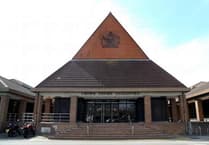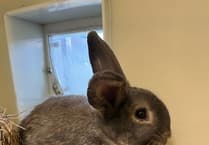It has been said that until our ancestors adopted a farming way of life and cleared the native trees, Britain was covered by thick and unbroken forest so that a squirrel would have been able to travel the length of the island without ever touching the ground. But is that just an myth?
A recent study of ancient pollen by researchers at Aarhus University in Denmark indicates that the natural state of Europe’s forests was far more varied, with much grassland and light woodland rather than only dense forest.
This is probably due to large creatures such as elephants and rhinoceros, which suppressed woody vegetation by eating and trampling young trees. It led me to draw parallels with the way grazing animals are used as a means to conserve heathland habitats here in Surrey.
The results of Aarhus University’s study, published in New Scientist, say that almost all previous studies looked at the 10,000 years or so since the last glacial period. By this time humans were already a dominant factor in shaping the landscape. So, researchers at Aarhus University looked back much farther, to the previous interglacial period around 115,000 to 130,000 years ago.
They analysed nearly 100 pollen samples from this time from locations across Europe, from the Arctic to the Mediterranean. Pollen preserved in lake sediments shows what plants were present in an area, but can give a misleading picture of past vegetation, because trees typically produce far more pollen than grasses.
They used a computer model developed by other groups that takes account of factors such as how much pollen different species produce to predict vegetation cover.
The team found past vegetation varied greatly in geographic area and over time. This variability could not be explained by climatic factors, they found. Nor was it mainly due to fires, with far fewer fires at this time than after the arrival of modern humans.
It led them to suggest that large animals are the most likely explanation, leading to a recommendation that conservationists should aim to recreate the processes that created this past landscape, rather than trying to recreate the landscape itself.
It occurs to me that it is just this approach that Surrey Wildlife Trust uses for habitat conservation. The trust’s cattle and other grazing animals both eat invasive vegetation and disturb the ground, opening it up for colonisation by other plants. The result is a “mosaic” of micro habitats which support a wide variety of wildlife.
Cattle are ideal for this work on Surrey’s commons. I can’t see any return to the grazing by elephants and rhinoceros thought to have been responsible for creating the ancient mixed countryside suggested by the study!




